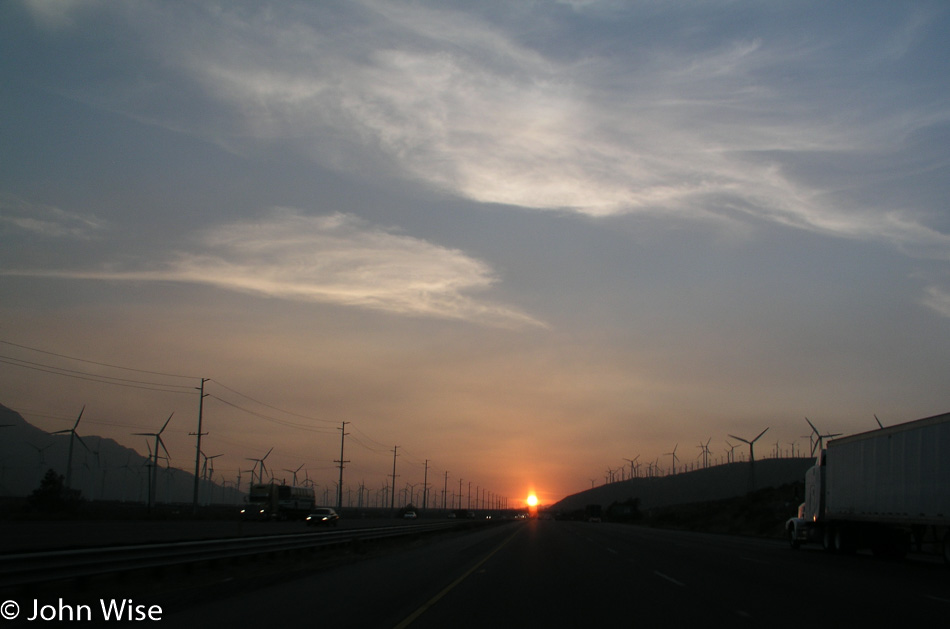
We can only be on Interstate 10 at the San Gorgonio Pass wind farm going west, and from the title, you already know we are heading out to Santa Barbara, California.
Dreams, Moments, Travels

We can only be on Interstate 10 at the San Gorgonio Pass wind farm going west, and from the title, you already know we are heading out to Santa Barbara, California.
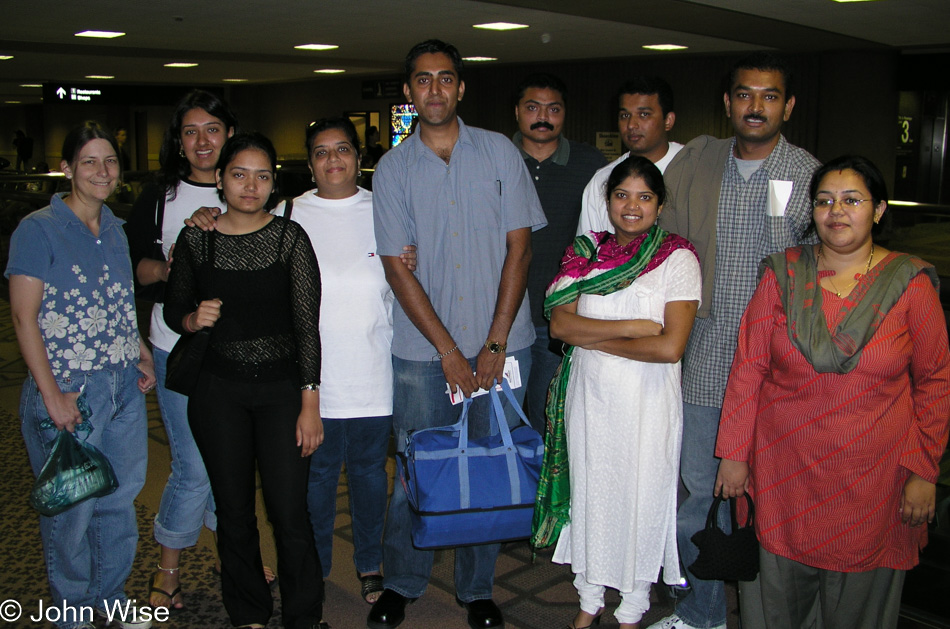
Jay Patel, in the center of the photo, is leaving Arizona to move back to India. After more than four years in America and extending his visa as long as he could, he’d reached the end of his extensions and had to leave. Jay made some lifelong friends in Arizona, which brought out many tears here at the last minute as everyone said goodbye.

It’s Saturday night in Phoenix, Arizona; what you gonna do? How about coloring our hair and putting on some dark lipstick and eyeliner for a night of Goth Bowling? That sounds like a great idea; get out your blackest clothes, and let’s go freak out the locals on a summer night.

Okay, did anyone give Rinku any lessons on how to throw the ball down the lane?

The sad looks reflect their sad scores, but don’t let the tears fool you; we all had great fun.
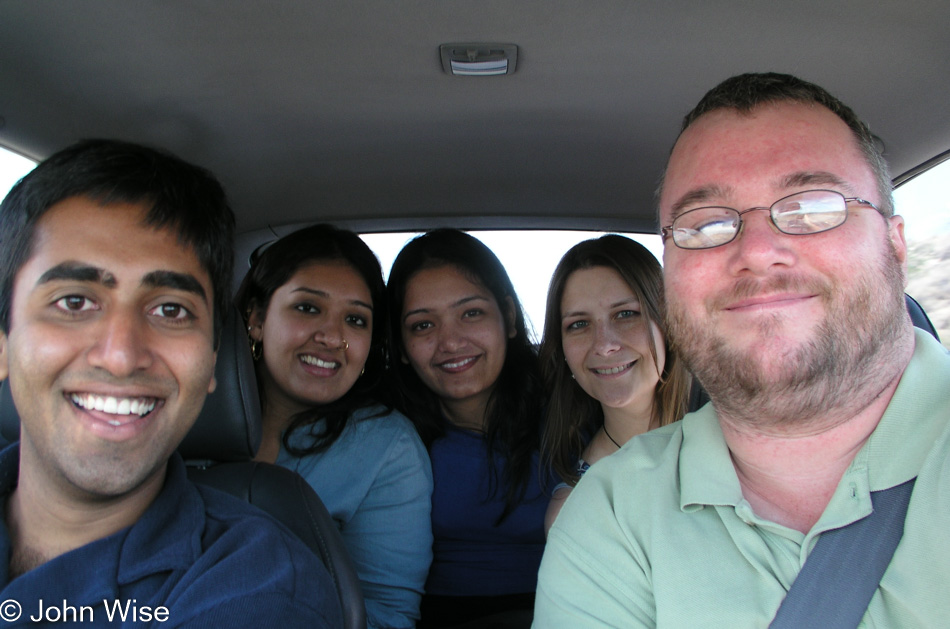
A plot to take Jay to Las Vegas without his prior knowledge was hatched just days before. Anju helped us out by filling in at the store while Jay joined me to pick up some packages delivered by UPS. On the way, we see three women hitchhiking. I stopped to pick them up; they identified themselves as Sandy, Mandy, and Candy, and so began our foolery to bring Jay on a surprise visit to Vegas.
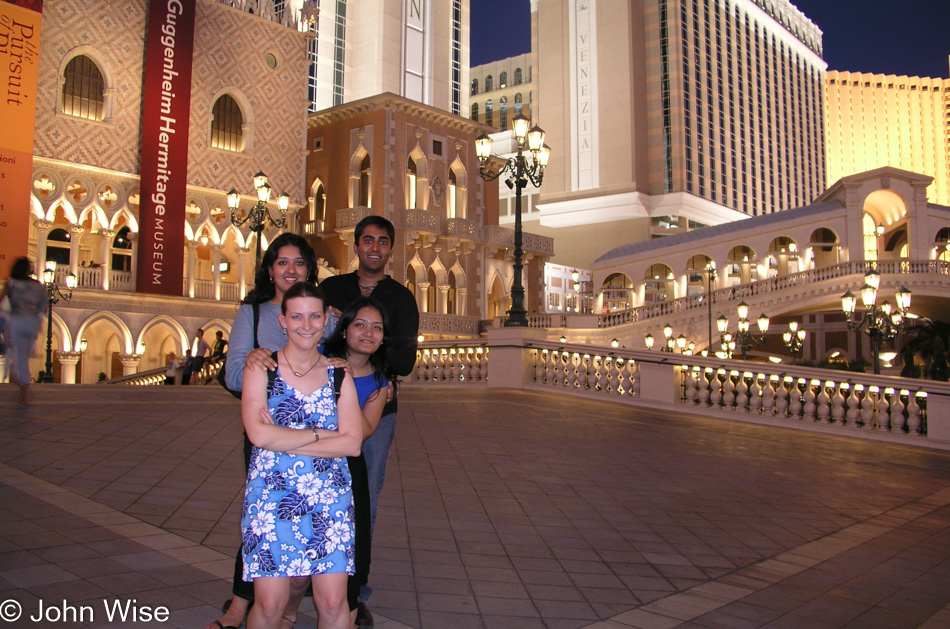
We left Phoenix at 3:15 and arrived in Vegas at 7:45.

Jay hadn’t been to Vegas before, and as he was leaving America in a few weeks, he just had to go.
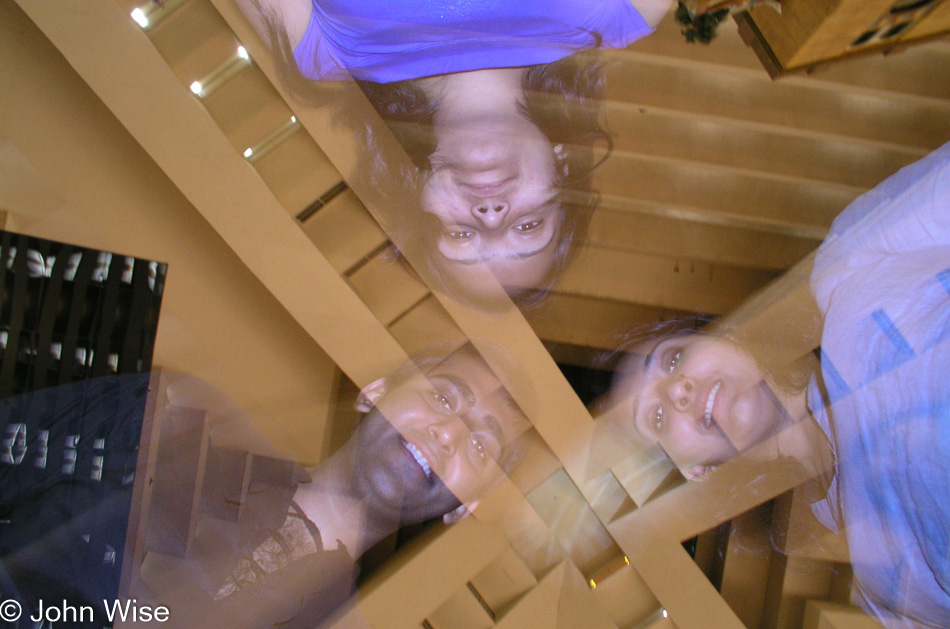
We went up the Stratosphere to ride the Bigshot and X-Scream at midnight,
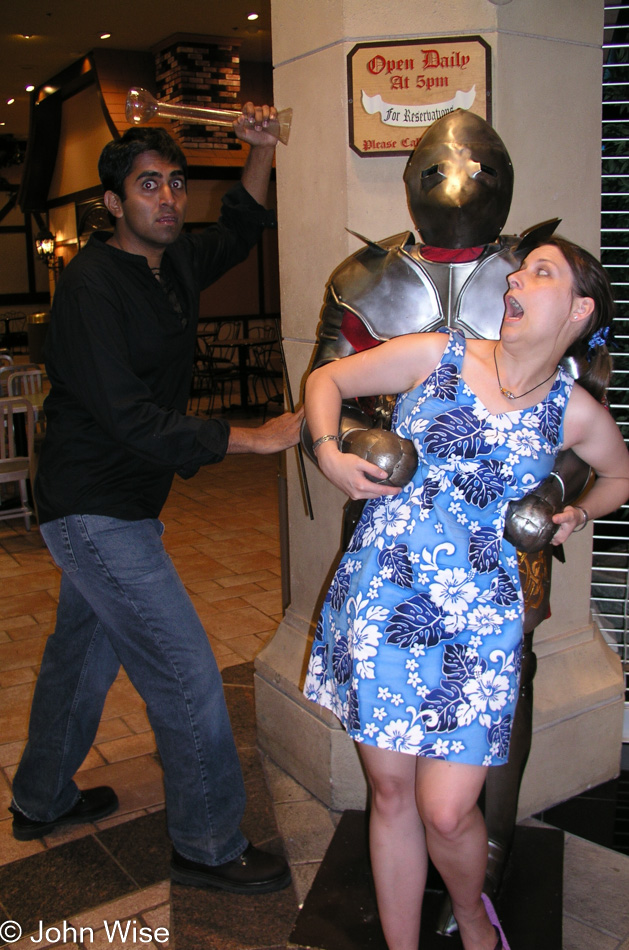
Walked all over the place, goofing off until 4:30 a.m.
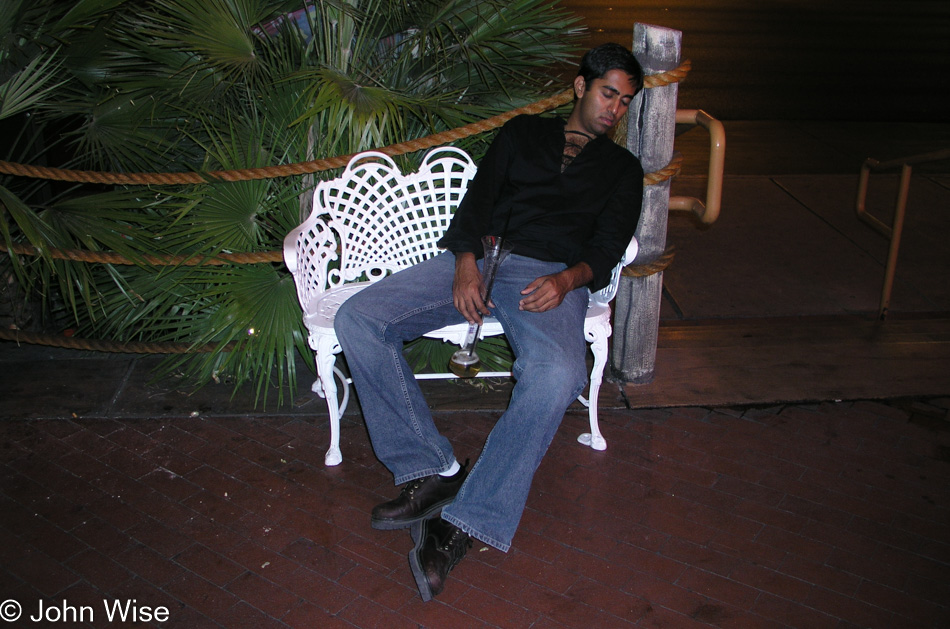
Goofing off until Jay passed out. Just kidding, we headed to our hotel to get all of 3 hours of sleep, figuring it was better than nothing.
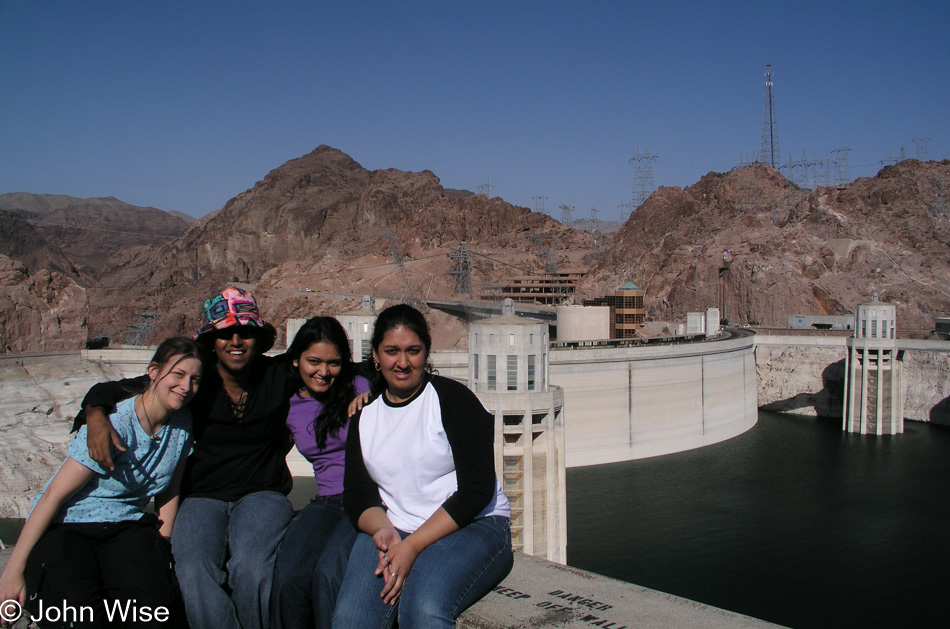
We awake early and are back on the road at 7:45 a.m. to Phoenix so Jay can get to work by noon. Here we are at Hoover Dam on the Arizona side. That’s Caroline Wise, Jay Patel, Rinku Shah, and Raenu.
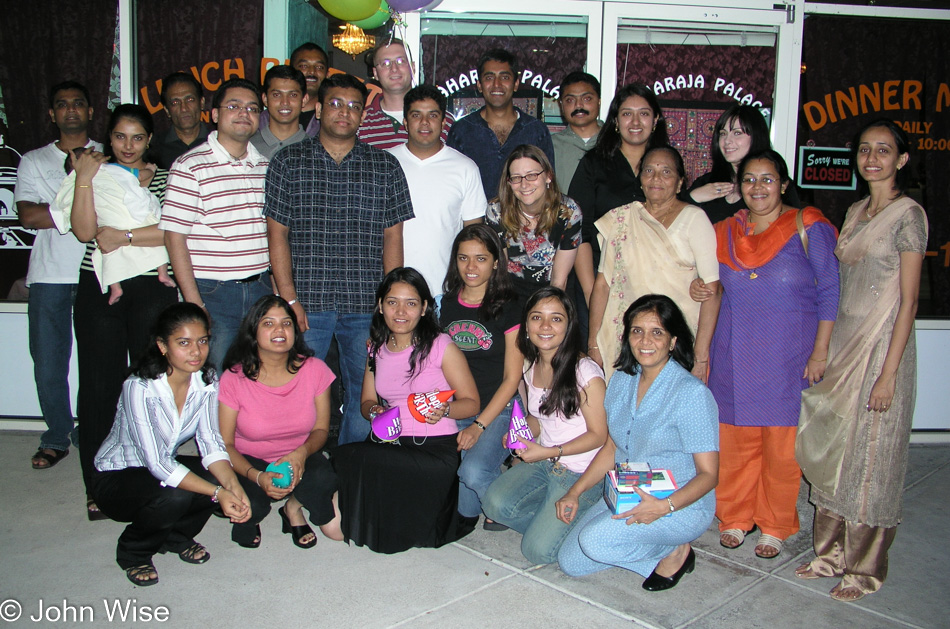
Today was Jay Patel’s birthday, and a couple of dozen of us got together with him at Maharaja Palace on Bell Road for dinner, cake, and celebration.
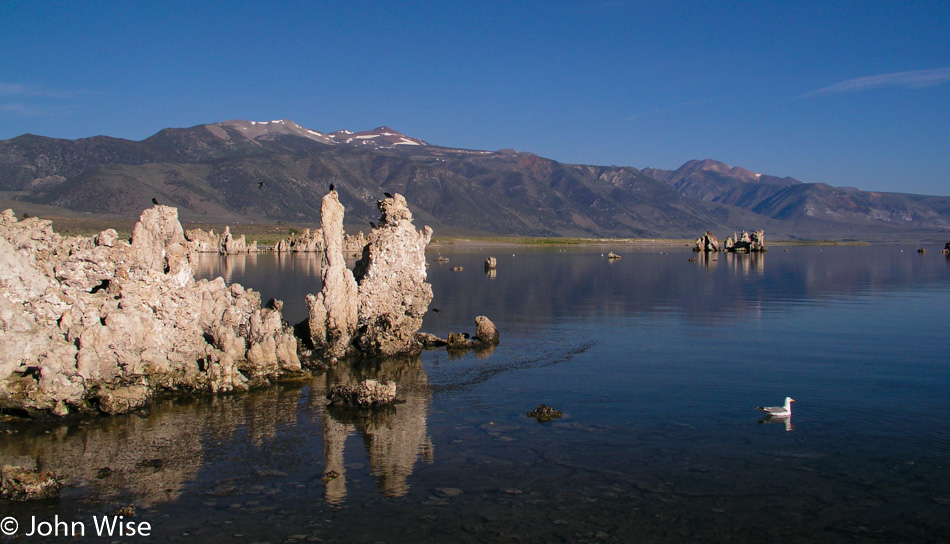
We got into Lee Vining, California, last night after midnight, which put us in the perfect spot to head up the mountain to Yosemite National Park or across the road to Mono Lake. We obviously chose the lake.
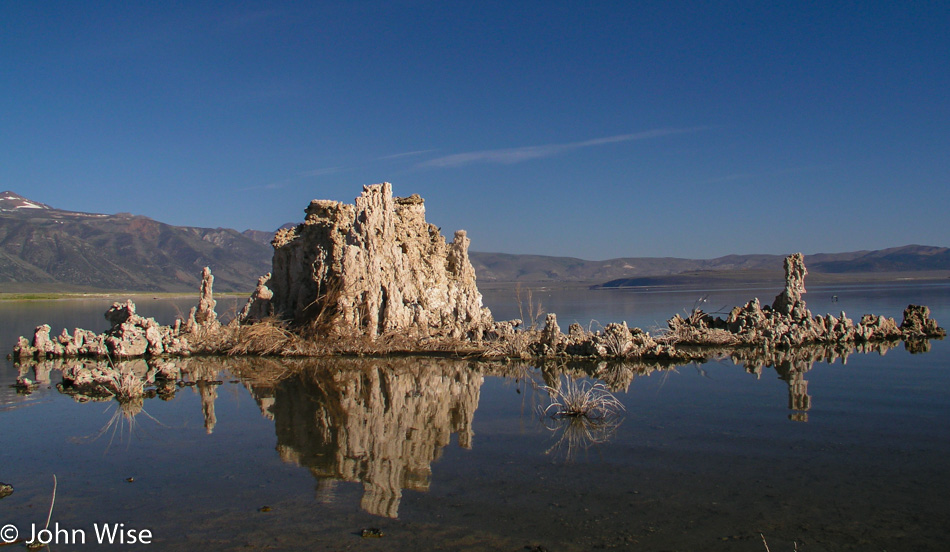
We are out on the South Tufa Trail, but with over 650 miles to drive today and the need to be back in Phoenix, Arizona, tonight, we can’t fool around, and we’re soon driving away from Mono Lake.
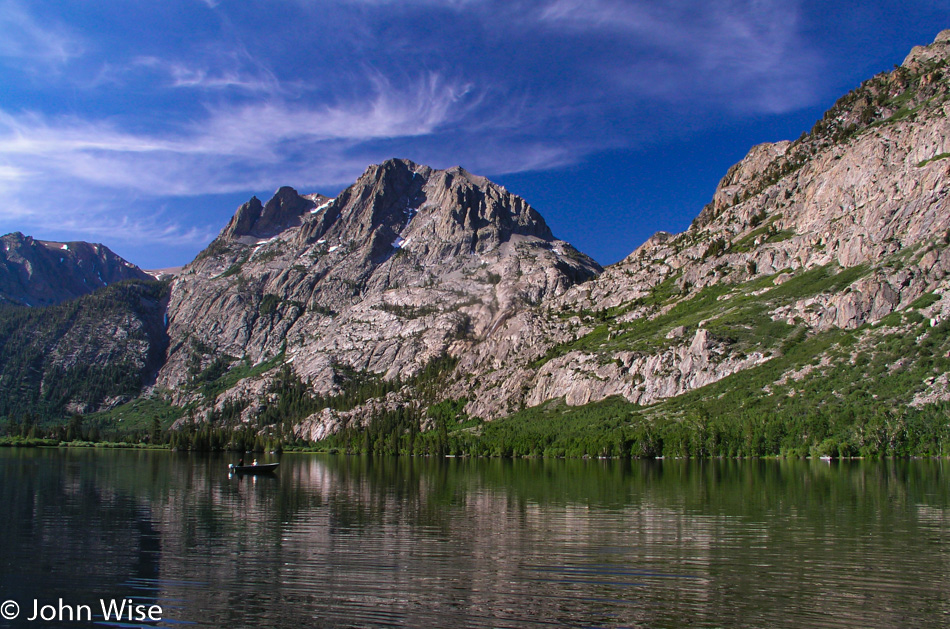
Okay, so maybe we have time for one detour. On a side road that is only a tiny bit out of the way, we pass Silver Lake and are happy we did, as this side of the highway is totally different than the other side.
Oh, we are so close to Mammoth, we should go up and visit the Devils Postpile National Monument! Until we get up the mountain and find out we have to wait for a shuttle to take us to the monument; little had we anticipated that even in summer, Mammoth is a popular destination, and what else is there to do up here when you can’t ski than drag your kids to the nearest national monument? Fully discouraged by the crowds I needed to escape this mountain asap.
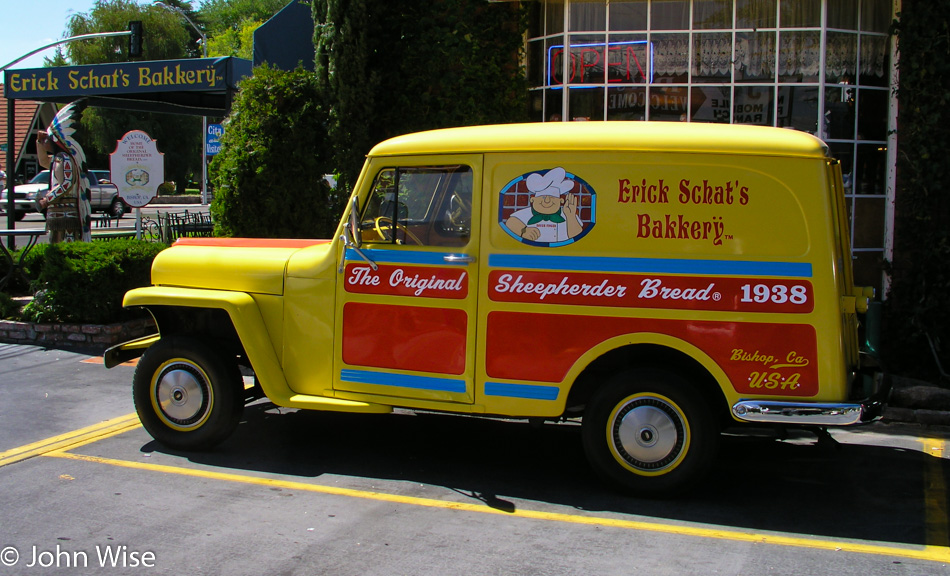
Nothing like a bakery to soothe frayed nerves, except this is likely California’s second busiest bakery, the first one being the madhouse called Boudin Bakery in San Francisco, which is famous for its sourdough. Well, crowded or not, I have to get something here in Bishop, as the Erick Schat Bakkerÿ with the middle name “Schat” talks to my inner 14-year-old so like peeing in Santa Claus (Indiana) back on our year 2000 cross-country trip, I need to eat some baked schat and that’s that.
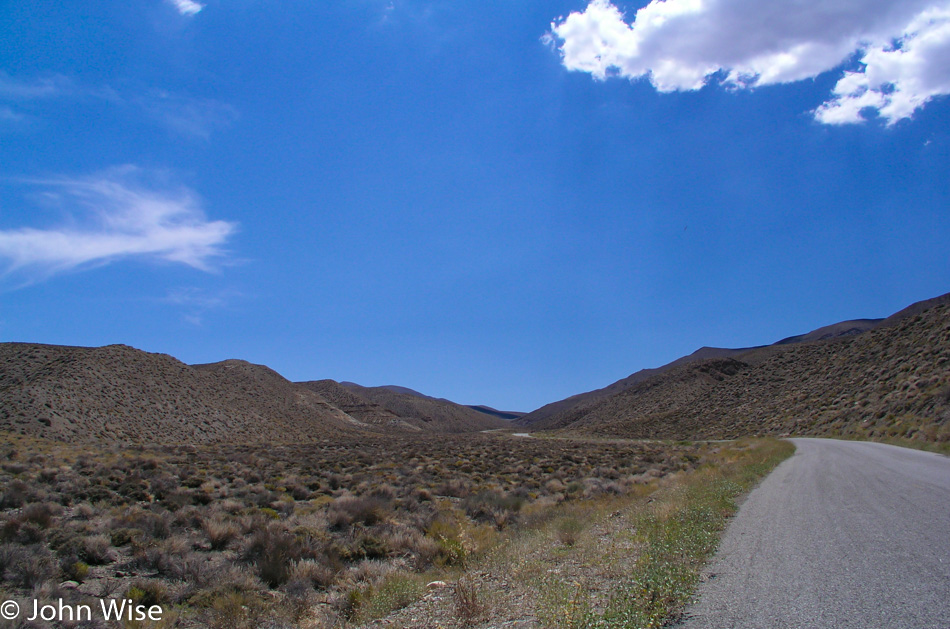
Hey, I have a great idea to delay our seriously long drive home; let’s take this back road from Big Pine, California, for 104 miles through a seldom-used and often treacherous trek through the north of Death Valley on a nice summer day in July. A local sheriff at the gas station tried to dissuade us, but we assured him we had enough water and lived in Phoenix, so we knew these temperatures and promised that if the car died, we’d stay in place until our rescue or death from exposure.
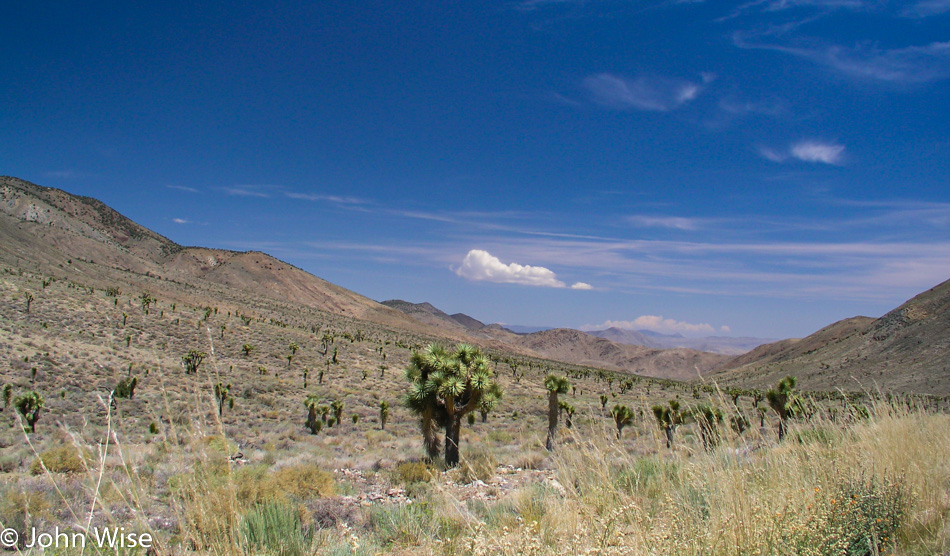
Well, it’s just beautiful out here. It’s quiet, too. The road isn’t half bad, but there is nobody else in sight. The temperature is well over 115 degrees and while confident nothing will go wrong, we choose to keep the air conditioning off to help ensure nothing overheats. We’re taking our time and enjoying the rarity of such an experience.
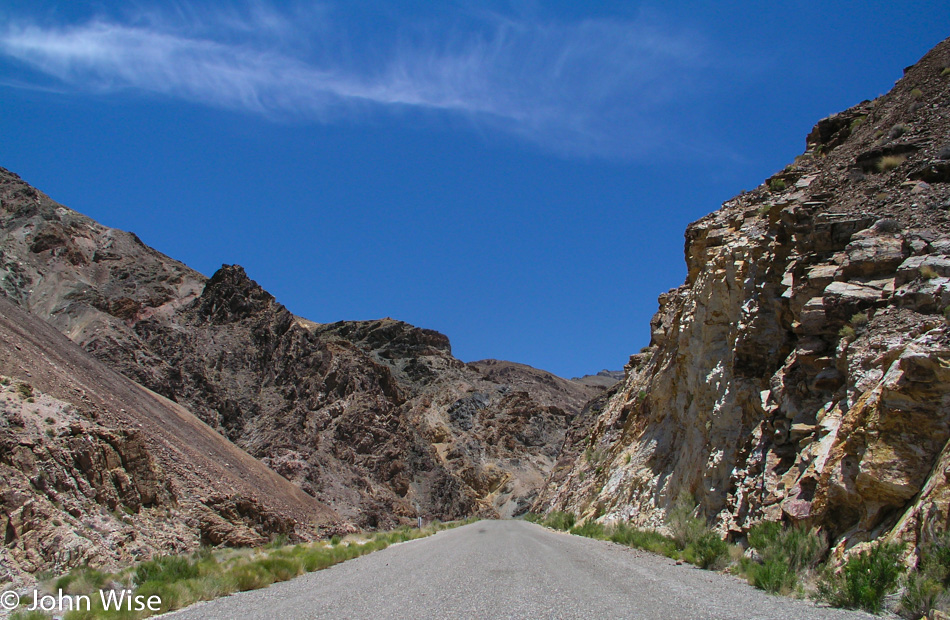
We feel quite alone on this lonely road. Every so often, we stop and get out of the car to look for signs of life and listen for what might be beyond our view, but everything is standing still. Passing through some parts of the road, we get a little nervous as we don’t know how the conditions of what lies ahead might change and require us to turn around in our rental sedan, but we go on, paying close attention to how many miles we are into the park.
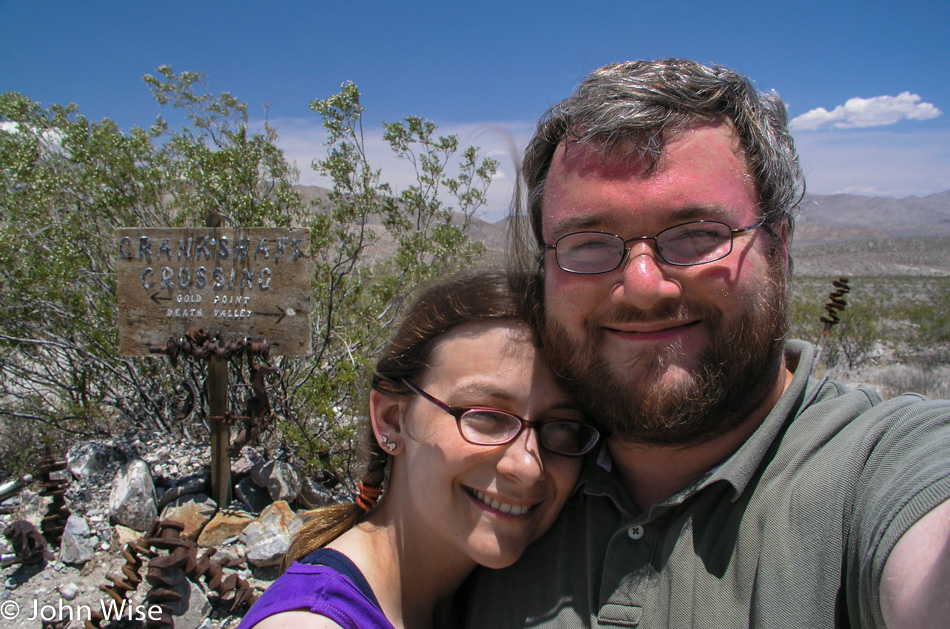
I took a number of photos from the open car window of the crankshafts and other assorted car parts here at Crankshaft Crossing when it dawned on me that we needed a selfie to prove that it was Caroline and John Wise who stood here at this remote outpost in Death Valley back on July 6, 2004, when we were young and dumb. It took us nearly 2 hours to reach this point, which is about the halfway point to joining the main road further down the way.
Claim to fame: I posit that this is the first-ever digital selfie taken at Crankshaft Crossing. Prove me wrong.
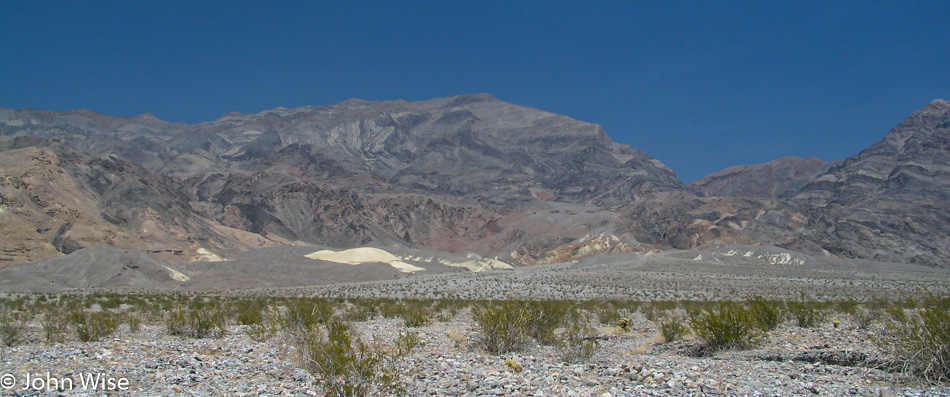
Wouldn’t you know that the last 10 miles of the road, after hours of dealing with varying degrees of washboard roads and uncertainty, would start making us seriously nervous?
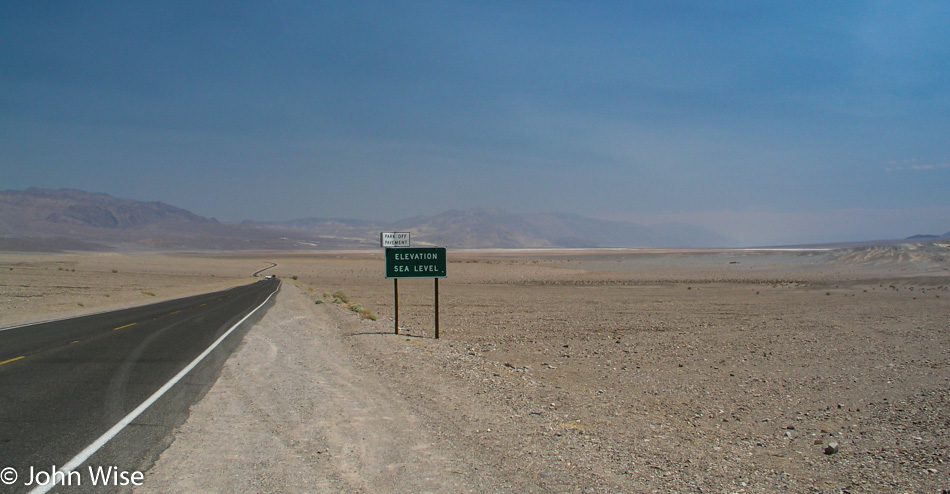
What kind of idiot thinks it’s a good idea to take a 4-hour detour on a dangerous road into Death Valley in July? Special idiots, apparently. We reached Furnace Creek, which is 190 feet below sea level, at 3:00 p.m., and it is 118 degrees in the shade.

Seeing we’re already here, we should see what else Death Valley has to offer when the park is empty. And what the hell is that 60-something-year-old guy in mini shorts doing running down the road? Are we hallucinating? Was he a mirage? Turns out he might be participating in the Badwater Ultramarathon which is 135 miles long, obviously starting at Badwater, a point 279 feet below sea level, to Whitney Portal on Mt. Whitney at an elevation of 8,360 feet. Who does that? I can tell you that those people are a lot crazier than these two people who took a nice Tuesday afternoon drive across the desert.
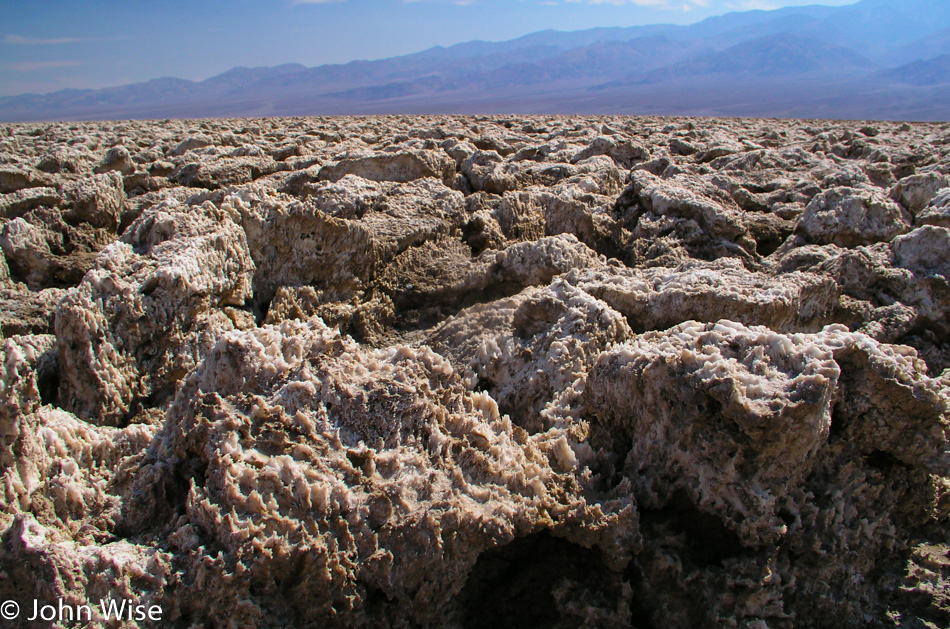
We didn’t do much out here at the Devils Golf Course besides letting Satan play through.
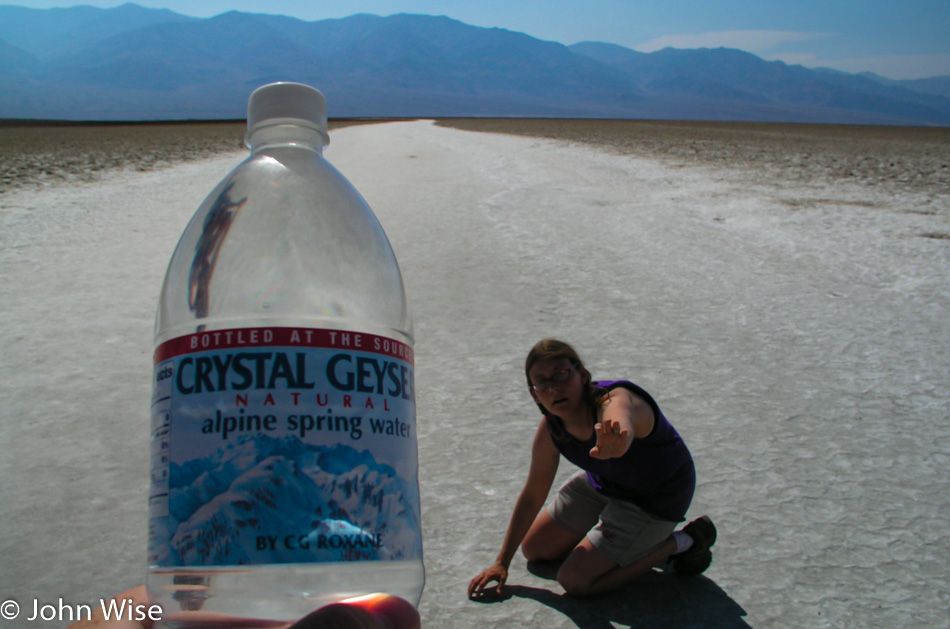
There’s also that kind of funny moment where I left Caroline out on the fairway and pointed in the general direction of where I’d pick her up over at Badwater. Crawling out of the desert on her hands and knees, I couldn’t help but laugh at how distressed she looked. Trust me, I know she was faking it, but I gave her the water anyway after such a big effort of dragging herself the 11 or so miles to the car.
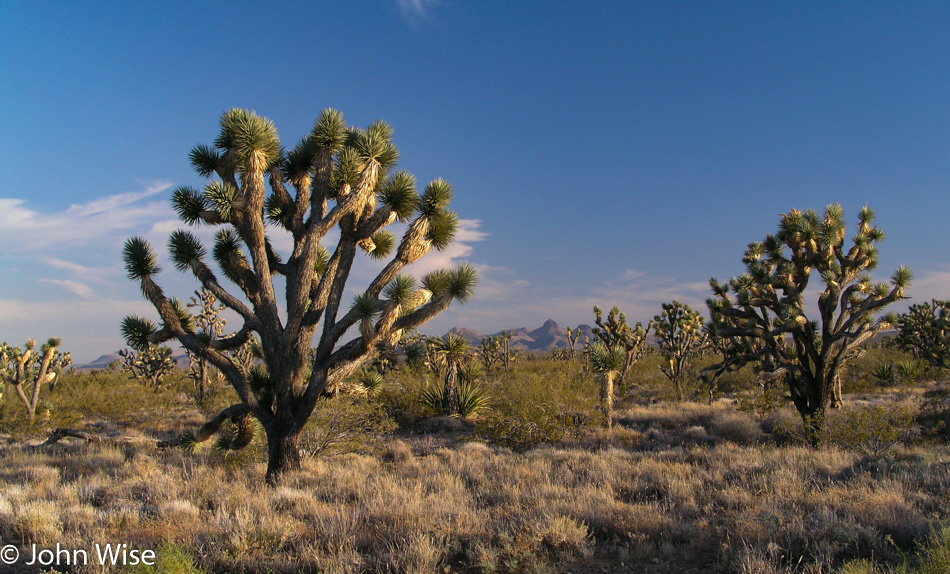
Joshua Trees along the highway, while we sped by, were the last thing worth sharing as from the time we left Death Valley just before 6:00 p.m., we needed to just keep driving. Wow, somehow, we got home before midnight. That was one action-packed 4th of July celebration.